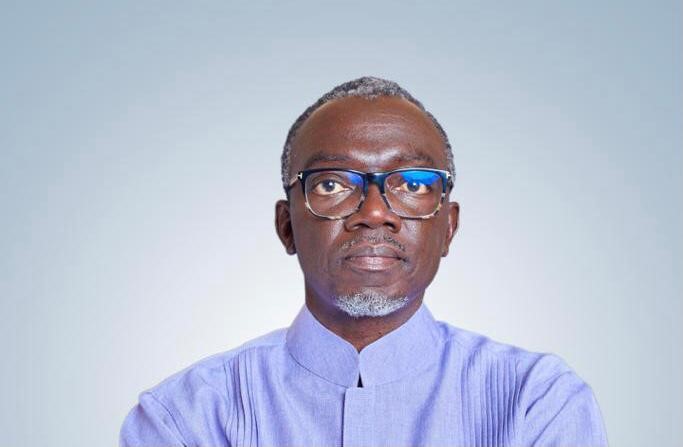There is no denying that urbanisation is increasing globally. Over 50 percent of individuals already reside in urban regions, and forecasts from Urbanet suggest that this figure will exceed 66 percent by 2050.
The rapid growth of urban areas, as rightly pointed out by the World Bank, “presents several difficulties, including the need to provide affordable housing, adequate infrastructure such as transportation systems and basic services, and employment opportunities for the approximately 1 billion impoverished individuals who reside in informal settlements in order to be near job prospects”.
The degree of urbanisation refers to the percentage of people living in areas classified as “cities”. However, the definition of a city varies across different regions of the world. Some countries consider settlements with one hundred houses or more as urban, while others only include the capital or provincial capitals in their count. As of 2022, more than half of the world’s population, at 57 percent, according to the UN, lived in urban areas. According to Statistica, North America is the most urbanised region, with over 80 percent of its population residing in cities.
The UN also projects that urbanisation between now and 2050 will mainly occur in Africa and Asia, with a projected 90percent increase in these regions. In India, the number of people living in cities was 410 million in 2014, and it is estimated to reach 814 million by 2050. China’s urban population, which was 758 million in 2014, is expected to reach 1050 million by 2050. Similarly, Nigeria’s urban population is projected to grow from 84 million in 2014 to 295 million by 2050.
Since cities support economic growth and contribute more than 80percent to GDP, finding ways to ensure that continued urban development is sustainable and beneficial for all is a core focus of the UNSDG 11: Sustainable Cities and Communities.
According to the 2022 Sustainable Development Goals Report, “in 2020, more than 1 billion people lived in slums or informal settlements, with Central and Southern Asia, Eastern and South-Eastern Asia, and sub-Saharan Africa accounting for 85 per cent of them.”
Sub-Saharan Africa is home to the highest percentage of slum-dwellers.
The Report notes that “a 1 percent increase in urban population growth will increase the incidence of slums by 2.3percent and 5.3percent in Africa and Asia, respectively.”
Some of the core reasons for the development of slums in developing regions include: “rapid urbanisation; ineffective planning; lack of affordable housing options for low-income households; dysfunctional urban, land and housing policies; a dearth of housing finance; and poverty” (UNSDG Report, 2022.)
Although cities account for the vast majority of global GDP, they are also responsible for more than 70percent of global greenhouse gas emissions. These emissions result in air pollution, which threatens human health across the globe.
According to the Report, “In 2019, ambient air pollution from traffic, industry, power generation, waste burning and residential fuel combustion resulted in 4.2 million deaths. Mortality is attributed to exposure to fine particulate matter of 2.5 microns or less (PM 2.5) in diameter and other pollutants, which put people at increased risk of stroke, heart disease, chronic obstructive pulmonary disease, lung cancer and lower respiratory infections.”
Moreover, it notes that “99 percent of the world’s urban population live in areas that exceed the new WHO guidelines on air quality…[and] people in low- and middle-income countries are disproportionately affected by outdoor air pollution,” with 91 percent of the 4.2 million premature deaths coming from these less developed countries.
Currently, just over half of urban populations have convenient access to public transportation. As cities grow, the need for adequate public transport becomes increasingly important – especially if they are to become sustainable, inclusive areas to live and work.
The Report insists that “public transportation systems that are well-designed and effective can promote mobility and enable people to access education, health care, employment and markets, while also reducing traffic congestion and pollution. They improve urban areas’ efficiency, inclusivity and safety while also helping to battle poverty and climate change.”
UNSDG Goal 11 is about making cities and human settlements inclusive, safe, resilient and sustainable.
Goal 11 targets aim to address the need for more sustainable cities and communities by:
- ensuring access for all to adequate, safe and affordable housing and basic services and upgrade slums
- providing access to safe, affordable, accessible and sustainable transport systems for all, improving road safety, notably by expanding public transport, with special attention to the needs of those in vulnerable situations, women, children, persons with disabilities and older persons
- enhancing inclusive and sustainable urbanization and capacity for participatory, integrated and sustainable human settlement planning and management in all countries
- strengthening efforts to protect and safeguard the world’s cultural and natural heritage
- significantly reducing the number of deaths and the number of people affected and substantially decrease the direct economic losses relative to global gross domestic product caused by disasters, including water-related disasters, with a focus on protecting the poor and people in vulnerable situations
- reducing the adverse per capita environmental impact of cities, including paying particular attention to air quality and municipal and other waste management
- providing universal access to safe, inclusive and accessible green and public spaces, in particular for women and children, older persons and persons with disabilities
- supporting positive economic, social and environmental links between urban, peri-urban and rural areas by strengthening national and regional development planning
- substantially increasing the number of cities and human settlements adopting and implementing integrated policies and plans towards inclusion, resource efficiency, mitigation and adaptation to climate change, resilience to disasters, and develop and implement, in line with the Sendai Framework for Disaster Risk Reduction 2015-2030, holistic disaster risk management at all levels
- supporting least developed countries, including through financial and technical assistance, in building sustainable and resilient buildings utilizing local materials
According to the World Bank, more than 56percent of the population of Ghana resided in urban areas in 2021. As urban populations have increased, access to formal housing, infrastructure and basic services has been placed under strain.
Ghana’s 2022 Voluntary National Review (VNR) Report on the Sustainable Development Goals (SDG) implementation revealed that as of 2020, 8.8 million people in Ghana were living in approximately 23 slums in Ghana – a 60percent increase from 2017. It must be emphasised that despite the rise in the number of individuals residing in slums, the proportion of the entire population in these areas declined from 39.3percent in 2017 to 28.2percent in 2020 (Jonathan Donker 2022).
“Air pollution is Ghana’s second biggest threat to health and causes 28,000 deaths a year.” According to the Clean Air Fund in Ghana, poor air quality is caused by “cooking using wood and charcoal, road transport, slash-and-burn methods of farming, open waste burning, energy generation, accidental fires and industry.”
To conclude, urbanisation is an ongoing process that is here to stay. By 2050, the UN projects that nearly 70percent of the global population will reside in cities. Governments and policymakers must focus on sustainable urban development to enhance cities’ living standards globally. This involves tackling issues such as slums, pollution, and rural-urban migration. A practical approach to achieving this goal and establishing healthy, environmentally friendly urban spaces for all inhabitants is through the United Nations Sustainable Development Goal 11 (UNSDG 11).
UNSDG Goal 11 aims to make cities and human settlements inclusive, safe, resilient and sustainable. Achieving these goals requires collaboration, which can lead to ground-breaking results that boost the economy, reduce urban poverty, protect the environment, and improve the well-being of various communities.
>>>The writer is an international chartered director and Africa’s first-ever appointed Professor Extraordinaire for Industrialisation and Supply Chain Governance. He is the CEO of PanAvest International and the founding non-executive chairman of MY-future YOUR-Future and OUR-Future (“MYO”) and the “thought-provoking” daily Nyansa Kasa(words of wisdom) series. Professor Boateng is currently the non-executive chairman of the Minerals Income and Investment Fund (MIIF). He was previously the non-executive chairman of the Public Procurement Authority (PPA). For more information on Nyansakasa, visit www.myoglobal.org and www.panavest.com










